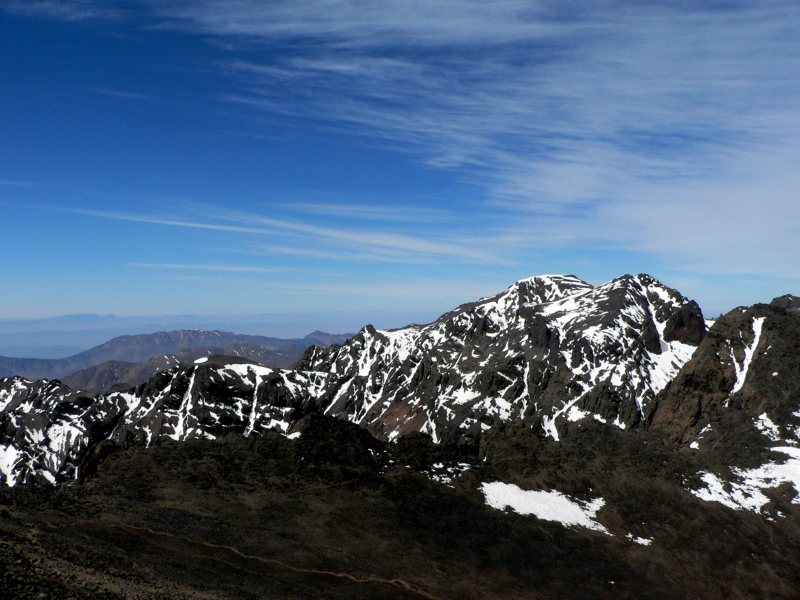Atlas Mountains

In North Africa's Maghreb region, there is a mountain range called the Atlas Mountains. The mountain range gives rise to the word "Atlantic," which separates the Sahara Desert from the Mediterranean Sea and the Atlantic Ocean. It traverses Morocco, Algeria, and Tunisia for around 2,500 kilometers (1,600 mi). Toubkal, which is located in central Morocco and has an elevation of 4,167 meters, is the highest mountain in the range (13,671 ft). Berber populations predominate in the Atlas Mountains. In various Berber languages, the words for "mountain" are Adrar and adras, which are thought to be cognates of the toponym Atlas.
Only a small portion of the Atlas's forest cover survives, and most of the terrain has been removed for agricultural use. The animal population in the highlands is likewise declining. Only a few jackals, a handful of tribes of monkeys at higher altitudes, and sporadic herds of wild boars can still be found in the oak forests that can be found in the northern half of the range.
The Atlas Mountains have very sparse vegetation due to limited rainfall and high rates of soil erosion. The regions with the most rainfall include damp cork oak forests with carpets of rockrose and lavender, as well as an undergrowth of arbutus (cane apple) and heather shrubs. Green oak and arborvitae (a kind of pine tree), which produce light, dry woods with a thin and bushy undergrowth, are common in dry areas. Although the arid tops are frequently reduced to sporadic patches of green oak and juniper trees, cedar forests predominate at higher elevations.
Location: North Africa's Maghreb region
Length of range: 1,600 mi











